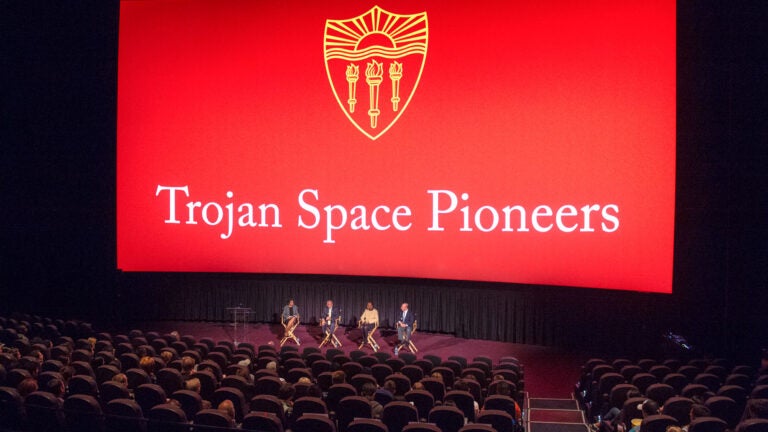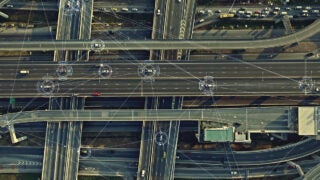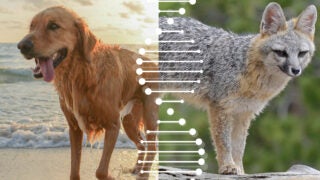
USC’s space connections in full force at First Man preview, discussion
Trojan Neil Armstrong’s historic moon landing is discussed by USC’s interim president (a former aerospace executive), a USC trustee who once led NASA and a former astronaut who’s now a USC Viterbi faculty member.
USC students joined high school pupils from the USC Leslie and William McMorrow Neighborhood Academic Initiative to see First Man, the film depicting the giant moonshot made by legendary astronaut and USC alumnus Neil Armstrong (MS ’70) a week before its Oct. 12 opening.
The presentation was courtesy of Universal Pictures and a joint effort by the USC Viterbi School of Engineering and the USC Visions and Voices initiative.
Armstrong’s turbulent journey, close brushes with death and subsequent steps on the moon have opened up a window of opportunity for humanity to become a multiplanetary species. That vision and how to get there was the subject of a panel of extraordinary Trojan space pioneers that included Wanda M. Austin, USC interim president and former president and CEO of The Aerospace Corp.; Charles Bolden, former NASA chief administrator, astronaut and USC trustee whose flights included deployment of the Hubble Space Telescope; and Garrett Reisman, a NASA veteran astronaut and former director of space operations at SpaceX, now a faculty member in the USC Viterbi Department of Astronautical Engineering.
“We’re going to leave low earth orbit because we’re going to discover that there are amazing things that we can do once we get beyond low Earth orbit,” Austin said, reminding students that it was a series of small steps, trials and errors with many unsung heroes that allowed us to reach the moon.
The next frontier
The panel was moderated by rocket scientist and space engineer Anita Sengupta. An adjunct research associate professor of astronautics at USC Viterbi, Sengupta was responsible for the supersonic parachute system that was integral to the landing of the Curiosity rover on Mars in 2012. She is now senior vice president of systems engineering at Virgin Hyperloop One.
“In the 1990s, we had the IT revolution, which has facilitated a whole new sector of the economy relating to being able to transfer large amounts of information very quickly,” Sengupta said. “Many are now saying that the 2020s are the transportation revolution. And why I work on the Hyperloop is part of that transportation revolution. It will be hyperloops, suborbital rockets and eventually going to Mars.”
Bolden said we are now closer than we’ve ever been to reaching Mars in part due to the commercialization of the space industry: “What we concern ourselves with today is what the quality of life is going to be like long-term for somebody who ventures off to Mars.”
He said NASA relies on data from companies like SpaceX and Blue Origin about coming back from hypersonic speeds and landing a vehicle.
Reisman, the senior adviser on SpaceX’s commercial crew program, said it’s important to have a sustainable reason for going to Mars.
“We were on a tremendous trajectory with Apollo, but a lot of it was predicated on geopolitics,” he said.
Reisman added that it’s important to have other reasons to go: “First of all, the exploration. To go there and see a volcano that’s 50,000 feet high and to see a canyon that’s the size of the entire United States, can you imagine that?”
Sengupta opened a discussion on how private access to space is also changing the way in which people become astronauts.
“If you look at astronauts today, they’re totally different from the days of Apollo when pilots dominated,” Bolden said. “One of the astronauts … getting ready to go the International Space Station [Zena Cardman] is a microbiologist and her passion is extremophiles. She spent her professional life in Antarctica scraping ice from under the arctic ice sheet to find microbes. She’s been diving around thermal vents, the beginnings of volcanoes, scraping up lava to find extremophiles, forms of life that can exist in very extreme conditions, which is exactly what we’re looking for on Mars. We’re looking for people who’ve had these extreme experiences as students and young professionals. It’s a totally different world for the group of astronauts today.”
Beyond Neil Armstrong: USC and the astronaut corps
As part of the First Man screening event, USC Viterbi Dean Yannis Yortsos exhorted students in the audience to follow in the footsteps of Neil Armstrong.
“In the history of the world, only 536 people have ever gone into space. At least 12 of them, including Charlie Bolden, are USC Viterbi alumni,” he said. “Who here tonight will join them?”



